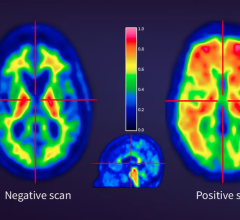
June 9, 2016 – Loma Linda University and Siemens’ PETNET Solutions Inc. have completed and brought operational a state-of-the-art positron emission tomography (PET) production and research facility to advance molecular imaging.
The facility is located on the Loma Linda University Health campus, Loma Linda, Calif., and includes a dedicated, fully-equipped research radiochemistry lab operated by the university, as well as a radiopharmacy and commercial production facility operated by Siemens’ PETNET Solutions. The center has two cyclotrons, one dedicated to research production and the other to the commercial operation, each capable to support the other endeavor for backup to ensure the highest reliability.
“With this investment, in addition to the existing pre-clinical imaging lab, Loma Linda University Center for Imaging Research has exponentially advanced its research capabilities and potential to advance molecular imaging,” H. Roger Hadley, dean of Loma Linda University School of Medicine, said. “In April, we completed the build-out of our radiochemistry lab with cutting edge technology and equipment. This offers significant testament to the commitment that Loma Linda University Health has for advanced cancer research.”
“We will be ready for human subject research soon,” Hadley continued.
The opening of this center lays the groundwork for the expansion of new biomedical and molecular imaging research, enabling further exploration in personalized medicine.
Radiochemistry, the chemistry of radioactive materials, incorporates radioactive isotopes into molecules. The addition of radioactivity provides the mechanism to image the molecules for pre-clinical development work and in the human body, and for the properties and chemical reactions of the molecules to be studied.
Due to the short half-life of the isotopes, it is critical that the radiopharmacy and radiochemistry labs are located next to the cyclotron, which produces the isotopes that are then chemically bound to molecules in the labs.
The new Loma Linda University Center for Imaging Research radiochemistry lab offers state-of-the-art equipment for this purpose, including a synthesis lab with hot cells to protect operators while working with the isotopes, a quality control unit to ensure the products are of suitable quality and pure, a clean room hot cell for sterile manufacturing, and various automated synthesis platforms to manufacture a range of products. These platforms include a dedicated C-11 acetate module, a C-11 multiproduct module, a Flourine-18 module and an O-15 water module.
The LLU Radiochemistry lab capability includes pre-clinical use and clinical trials. This month, equipment for purification of the agents manufactured in the radiochemistry lab will be installed, the last element required for human subject clinical trials to begin.
Barbara Holshouser, Ph.D., medical physicist and director of the Center for Imaging Research said, “The center will act as a core facility to provide radiochemistry and imaging expertise to researchers and clinicians at LLU and their collaborators who want to conduct basic science research and clinical trials using molecular imaging and therapy agents.”
Holshouser continued, “Molecular medicine is the future of medicine that personalizes clinical care by characterizing specific disease processes at the cellular level in individual patients. For example, there are molecular imaging agents designed to target specific cancers such as prostate or breast cancer for enhanced detection of metastatic lesions. Once the lesions are visualized, we can use molecular therapies designed to target and deliver localized radiation to the metastatic lesions. This one day may diminish the need for more toxic treatments such as chemotherapies or large area radiation.”
The first LLU project will be to finish the current study underway on neuropathic pain in patients with spinal cord injury, a Department of Defense (DoD)-funded study. Several DoD grants amounting to millions of dollars provided the funds for Loma Linda to purchase a cyclotron and other equipment. Additional studies will involve Alzheimer’s Disease research, and the Loma Linda University Center for Imaging Research will continue to apply for research grants and participate in clinical trials.
“Loma Linda University Center for Imaging Research is registered with the Clinical Trials Network of the Society of Nuclear Medicine and Molecular Imaging. LLU is one of a select number of sites on the west coast with the capability for production of PET radiopharmaceuticals as well as imaging capabilities that will provide numerous research opportunities in all disciplines,” said Holshouser.
Another component of the new facility is the radiopharmacy and commercial manufacturing operation run by Siemens’ PETNET Solutions. Through this facility, PETNET Solutions supplies clinical doses of radiopharmaceuticals to aid in the diagnosis of cancer and other diseases. Biomarkers produced there are also supplied to researchers interested in investigating new applications or to use as screening tools in support of the clinical trials of therapeutics.
Clinical doses are generated daily on customer demand due to the short life of the products. They are shipped in the early morning throughout Southern California, arriving in hospitals and imaging centers on time to enable patient scanning.
Siemens’ PETNET Solutions provides the maintenance and operation of both cyclotrons and supplies Loma Linda University researchers with clinical doses of specific agents on an as-needed basis. These products are frequently very short-lived to where they must be made on-site and just-in-time to support LLU research, while others can be distributed regionally.
Groundbreaking for the facility took place in January 2014. Construction was completed in February 2015, followed by a rigorous process of validation, qualification, inspection and licensing to ensure the highest quality and compliance with the U.S. Food and Drug Agency (FDA) and state requirements. Siemens’ PETNET Solutions shipped the first clinical dose from the center on Sept. 17, 2015.
For more information: www.lomalindauniversityhealth.org


 November 12, 2025
November 12, 2025 









